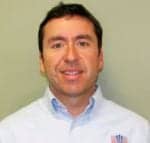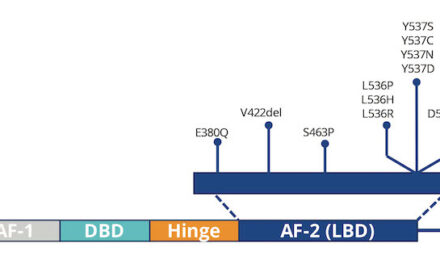
Ironically, dealing with controls can make a clinical laboratorian feel decidedly out of control. And as the Centers for Medicare and Medicaid Services (CMS) transitions from an equivalent quality control (EQC) strategy to one based on risk management (EP23A, Laboratory Quality Control Based on Risk Management, Approved Guidelines, published in October), things may feel even more unsettling.
Questions can range from the basic (“Am I using the right control?”) to the logistical (“Where do I find the right control?”) to the complex (“How do I establish ranges so that I use the right control correctly?”).
Of course, these questions may have also existed with EQC. The problem is that with the growing shortage of qualified laboratory personnel, some laboratorians may not know how to answer these questions in either situation, an issue in smaller labs more so than hospital and reference laboratories. But as the questions expand and change, the issue becomes even more confusing.
With the new risk-management approach proposed by EP23A, each question to be asked regarding a certain control will need to be answered differently depending on a number of factors. New Clinical Laboratory Improvement Amendments (CLIA) recommendations incorporate this guideline, which is based on the International Standards Organization (ISO) risk management principles, and suggest that laboratories design, implement, and monitor a customized QC plan (QCP) that takes into account a laboratory’s environment, personnel, clinical use, patient population, and test systems.
“If the risk analysis is done properly, a lab should be able to truly minimize the chance of unacceptable patient results and the associated outcome, and have an efficiently operated quality control program,” says Max Williams, division global marketing manager, Quality Systems Division, Bio-Rad Laboratories, Irvine, Calif.
Williams predicts that designing the right QC for a laboratory is going to dominate the laboratory lexicon for the next 2 years. “It’s going to be increasingly important for lab directors and staff to look at QC in the context of patient risk and results, and that’s going to require better data management and real investigation into designing the right QC,” Williams says.

Bio-Rad offers more than 300 third-party quality control products to choose from, with more than 600 of the analytes tested in most areas of the lab.
THE RIGHT EXPERTISE
The first challenge is educating laboratory personnel on how to achieve these objectives. The good news is there are many opportunities. Organizations, such as the American Association for Clinical Chemistry (AACC), the Clinical and Laboratory Standards Institute (CLSI), and COLA, offer related educational material as do many vendors. Much of this can be found online.
Audit MicroControls, Carlsbad, Calif, provides a number of tools, including information on how to establish ranges and assistance with plotting data, such as for linearity or quality control. Bio-Rad Laboratories offers tutorials and conducts seminars targeted to laboratory customers. Patti Shugart, vice president sales and marketing for Carolina Liquid Chemistries, Winston-Salem, NC, keeps a list of resources, from Web sites to books, that can help answer control-related questions. “Education is key to the challenge of understanding controls,” Shugart says. And it is key to the development of an adequate quality control program.
THE RIGHT STUFF

Randox Laboratories has been supplying liquid frozen controls for routine chemistries and immunoassays for 3 years, and is continually adding to its line with new controls that are liquid stable at 2ºC to 8ºC in response to a worldwide trend away from lyophilized materials.

Alison Canning, Randox Laboratories Ltd

Mario Gastelum, Audit MicroControls

Max Williams, Bio-Rad Laboratories
“We see a lot of laboratories that don’t have a [quality control] protocol in place and really don’t know where to start,” says Mario Gastelum, director of sales, US, Audit MicroControls. Putting an effective protocol together will require some research and analysis—ie, time, a resource many laboratorians find scarce.
In designing quality control solutions that take into account risk management, one rule cannot apply to all. “It’s very common for laboratories to have just one QC rule and one QC frequency that’s used, and that’s it,” says John Yundt-Pacheco, scientific fellow at Bio-Rad. “But that ignores the basic facts that you need different quality for an analyte like sodium than you do for an analyte like CK [creatine kinase], and whether you’re testing 1,000 patients a day or 100.”
QC usage should, therefore, be aligned with the quality requirement and the volume of patient testing rather than simply using the same QC strategy across the board. Similarly, internal reference ranges must also be established, rather than simply relying on the manufacturer information. “There is a mind-set out there that the package insert [definitively establishes] what the ranges should be,” Shugart says.
But once again, specifics matter. “In some instances, laboratorians think that a control should recover pretty much the same across the board with regard to different instruments and different platforms, but that is not the case,” says Ranato Pena, vice president of technical support, Carolina Liquid Chemistries.
One way to evaluate the behavior of a control in the laboratory is to compare it to its behavior in other laboratories, but particularly those using the same equipment and with similar volumes. Comparison among peers can help to better identify issues than comparisons within a laboratory or mismatched organizations.
Controls that have not been designed well may behave differently from machine to machine and system to system. They may also behave differently from lot to lot. And they may behave differently than a patient specimen (although commutability is more a factor in calibration than consistency, notes Ralf Schoenbrunner, PhD, vice president, Research and Development, Molecular Diagnostics, Life Technologies Corp, Benicia, Calif.
THE RIGHT FOLLOW-UP
Of course, having the right control does not assure perfect performance from an analyzer, and so it is also important that laboratorians understand not only how to create a customized QCP but also how to maintain quality when there is a QC failure. “What does a QC failure mean?” Shugart says.
A majority of laboratories work with the 12s rule (which goes into effect when a result falls outside two standard deviations from the mean), according to Yundt-Pacheco. The problem is that this results in a large number of false rejections. “This means that if you evaluate QC on your chemistry analyzer, you’ve got a high chance of getting at least one QC rejection,” Yundt-Pacheco says.
Most laboratories follow up such a result with a repeat. “We’ve analyzed the mathematics of that, and it turns out for many labs that’s a very wise decision,” Yundt-Pacheco says. A single repeat QC evaluation can help to rule out the false rejections.
However, if the rejection is appropriate, the laboratory will then need to investigate further—how much investigation will depend on the QCP. If the control was run with the previous specimens, then the problem will be less time-consuming than if it was run farther out. Laboratories that run the control once a day may have 24 hours of patient samples at risk of inaccurate reporting.
“When you do the math on this scenario, the risk expectation is that when you have a failure, one-half the number of patients between QCs are at risk,” Yundt-Pacheco says. “So the bottom line is that if you can close your patient results with the QC evaluation, you dramatically decrease that risk.”
THE RIGHT VALUE
The problem with this approach is, of course, cost. Most laboratories will find greater value running a control with a full batch of patient samples versus one-offs. “Using a full plate with 96 wells, the reimbursable cost for the control gets divided by 93. But a lot of laboratories don’t operate at that scale, so the reimbursable cost for the control may get divided by, say, five,” Schoenbrunner says. This can make it difficult for laboratories to implement the QCP they may like. Cost containment is, therefore, a large issue.
When possible, batching can definitely help to conserve control and save money. Laboratories may be able to batch some tests, such as statins, that are not as urgent as others, such as heparin. In other cases, time is not a luxury. “If you’re in a hospital and you’re running electrolytes every day, then you have to run them every day,” Shugart says.
A cost-saving option in this situation is to buy multiconstituent control materials and batch different tests together. “While it is not possible to have all routinely run analytes in the chemistry and immunoassay settings included in a single control product—for reasons of cost and analytical interference—certain combinations are possible,” says Alison Canning, a trainer at Randox Laboratories Ltd, UK. “For example, routinely run tumor markers can be combined with hormones, therapeutic drugs, and other immunoassays; routine chemistry analytes can be combined with specific proteins and therapeutic drugs.”
She advises that a lab can reduce the amount of control that is wasted due to analyzer dead volume and save significant costs by purchasing materials with the aim of matching a control as closely as possible to the assays run on a particular analytical platform.
Similarly, laboratorians should also pay attention to the cost of a particular control material. Using the right amount of a control can also save on cost. “For example, a cardiac marker’s control is significantly more expensive on a per-milliliter basis than a general chemistry control,” Canning says. “However, it is commonplace to treat them in the same manner when pouring a volume into a sample cup for a particular day’s testing.”
THE RIGHT CONTROL
Laboratorians can also maximize their controls by following instructions carefully. Many labs prefer to use liquid stable control materials. However, these tend to cost more. “Depending on what you want, there are things you’ll sacrifice,” Shugart says.
“If you want longer control stability, you’ll have to reconstitute the control,” she adds. “If you want ease of use, like a liquid control, you’re going to sacrifice shelf life and will typically pay more.” The current trend worldwide is moving away from lyophilized control materials toward liquid ones, driven by greater automation and the installation of modular analyzers. “As people are less accustomed to carrying out manual steps in the running of assays, they are also less inclined to want to reconstitute control materials,” Canning says. “The US has traditionally been a very liquid-dominated market, but this has now spread to many other parts of the world.”
But even liquid controls must be properly cared for. “Labs should ensure that they are storing materials correctly, they are not exposing serum to freeze-thaw cycles, and frozen controls are placed in the lab’s freezer immediately on receipt,” Canning says. Ideally, these freezers should be industrial, though many laboratories still use “frost-free” freezers. “In this situation, the periodic heating up of the coils that occurs to melt any ice that has formed will damage any stored control materials,” Canning says.
FINDING THE RIGHT STUFF
Once the parameters of a specific control have been established, the laboratory must then actually find an appropriate control. This, too, can be a challenge. “A laboratory may have a particular analyte they are looking for that must hit certain ranges, and they may find that what’s currently available may not go low enough or high enough,” Gastelum says.
However, laboratories may need to dig a little deeper. “Companies that make these products have dwindled, but there are less well-known companies that people may not be aware of,” Gastelum says, citing Audit MicroControls as an example.
Bio-Rad’s Williams has noticed a new trend toward manufacturers moving away from developing their own controls and working with third-party-developed materials.
Laboratories may also choose to homebrew, a decision that comes with additional responsibilities (such as verification of reproducibility). “Administrators need to understand the real cost of their homebrew control,” Schoenbrunner cautions, noting it may not provide the value one thinks.
Again, laboratorians are being asked to determine the value and make the right choices that maximize resources and minimize risk. But with the right education, tools, and plan, they can master control of controls.
Renee Diiulio is a contributing writer for CLP.



